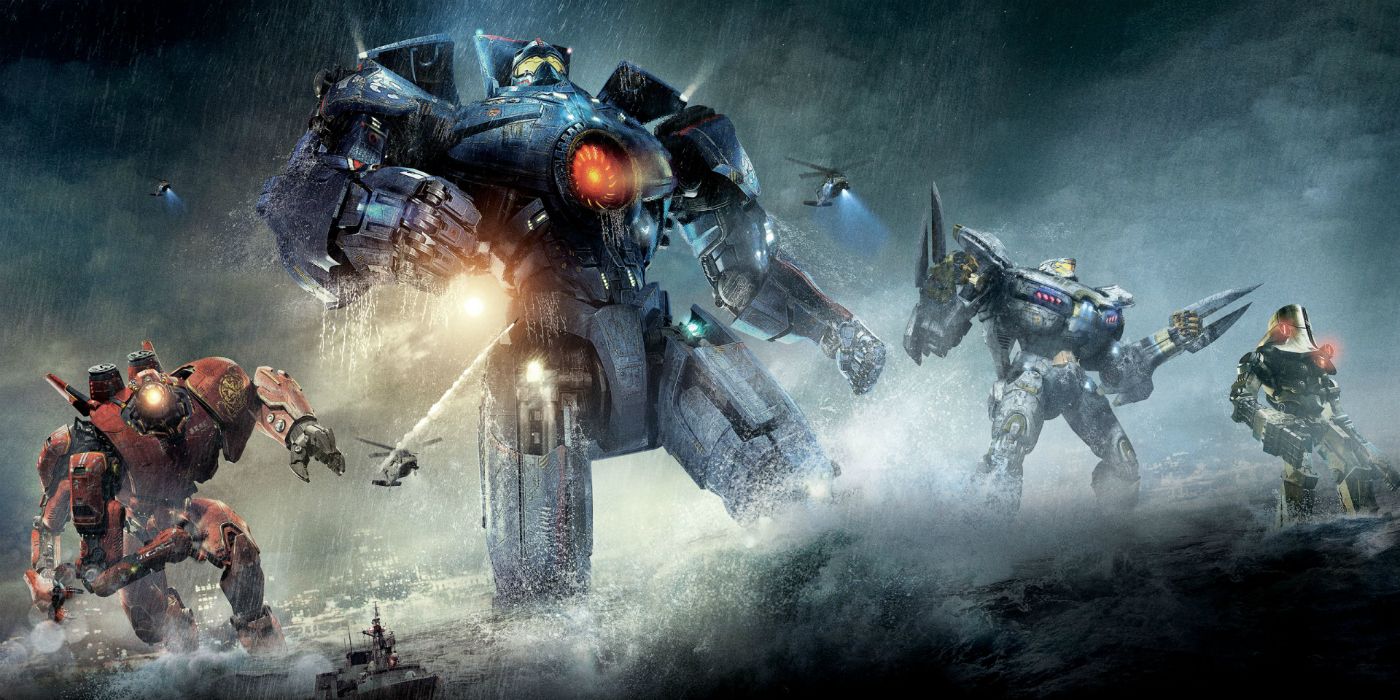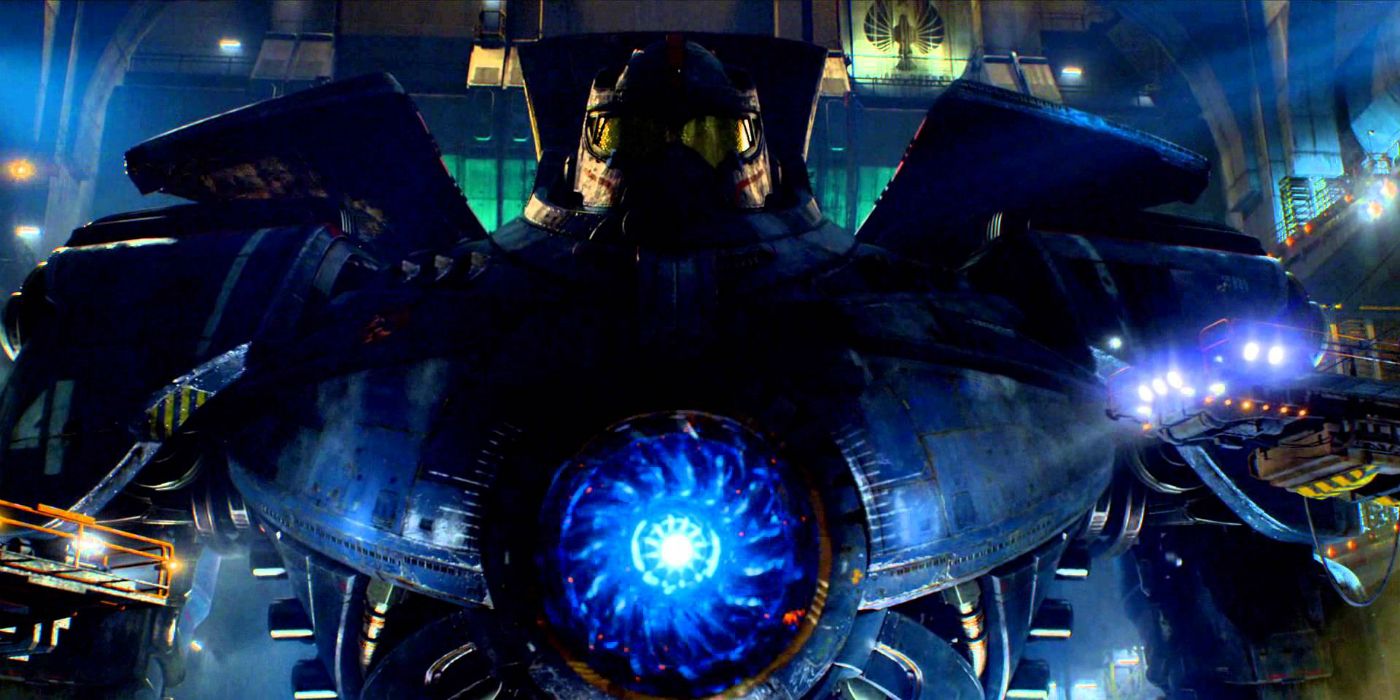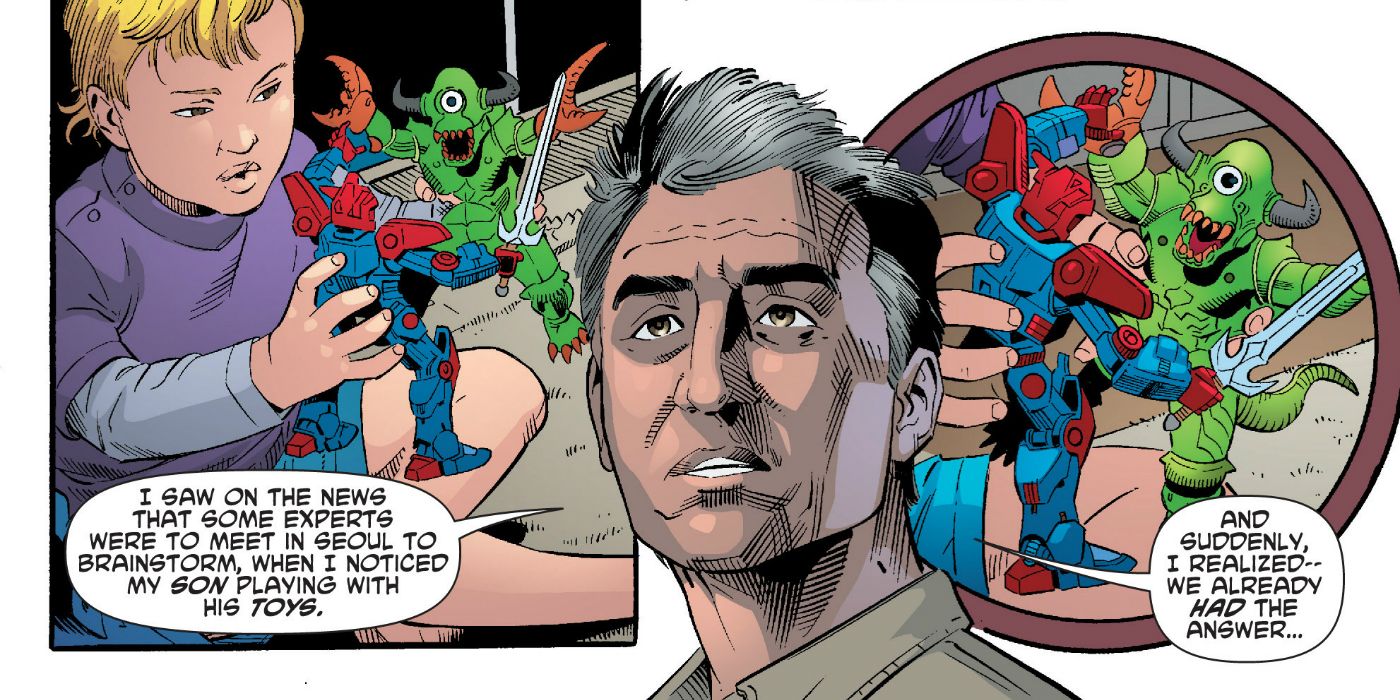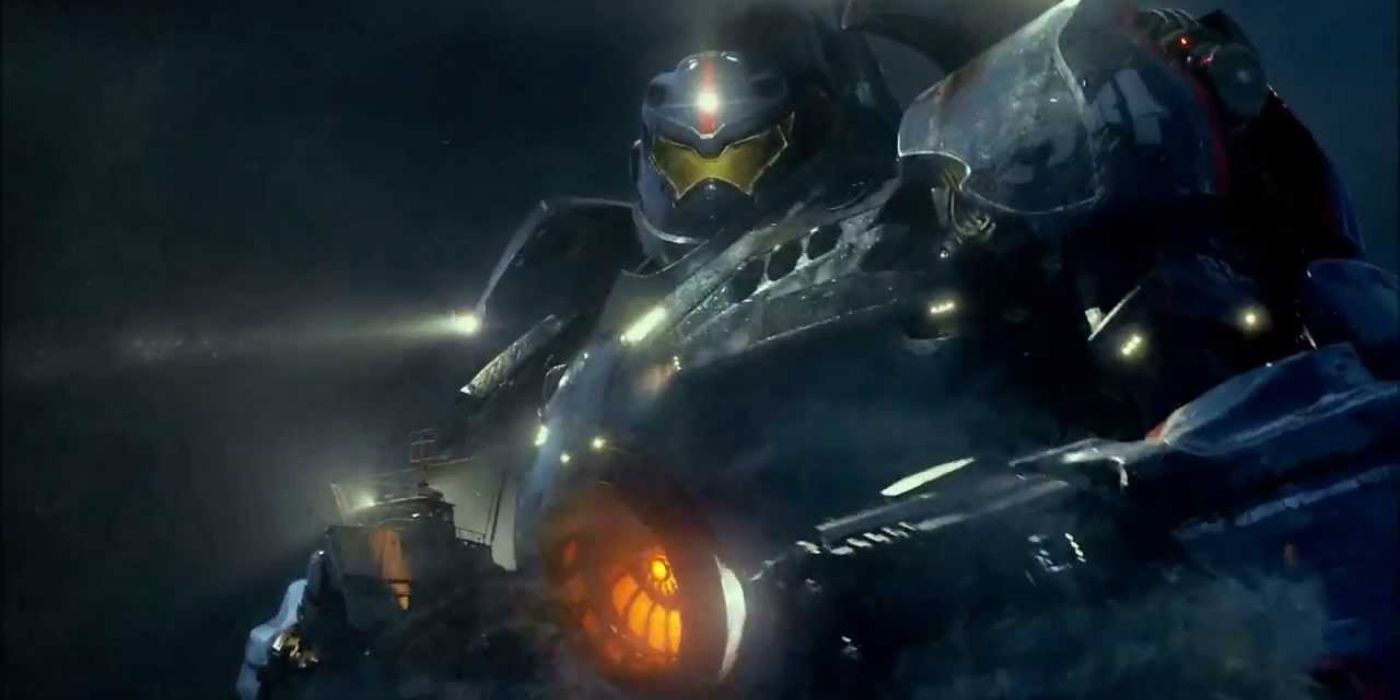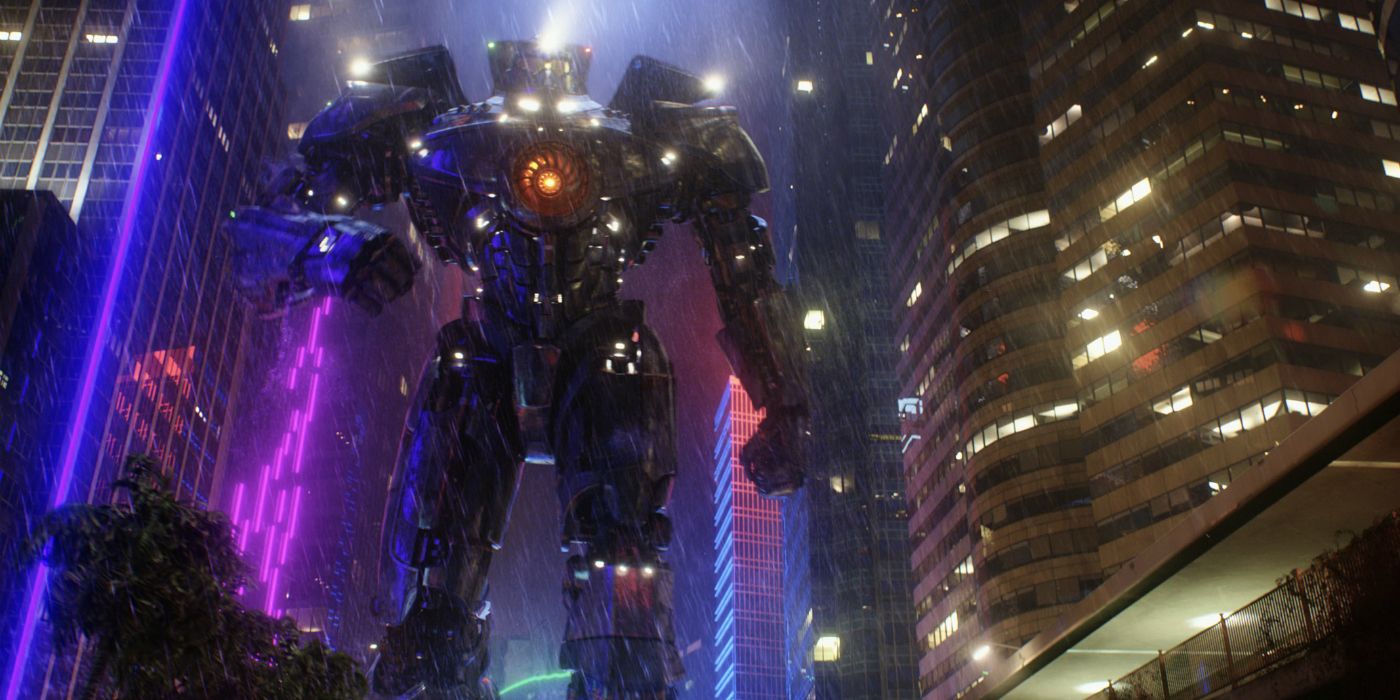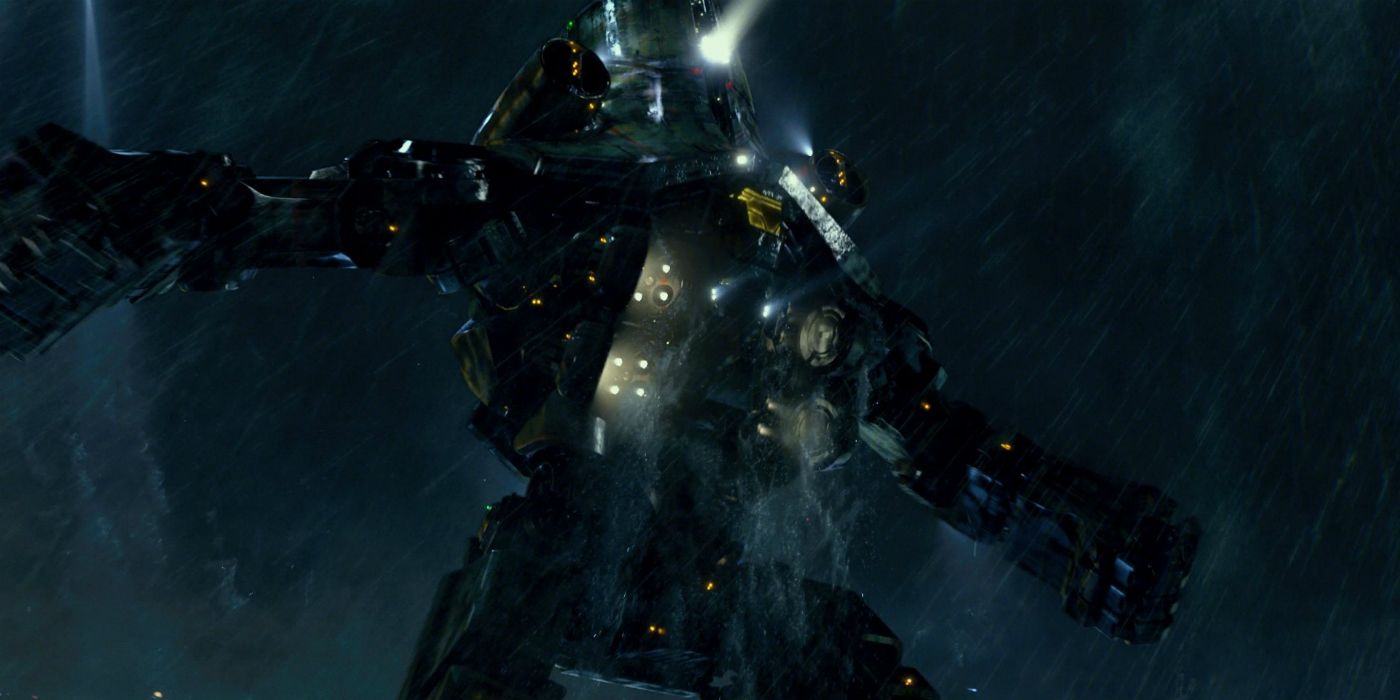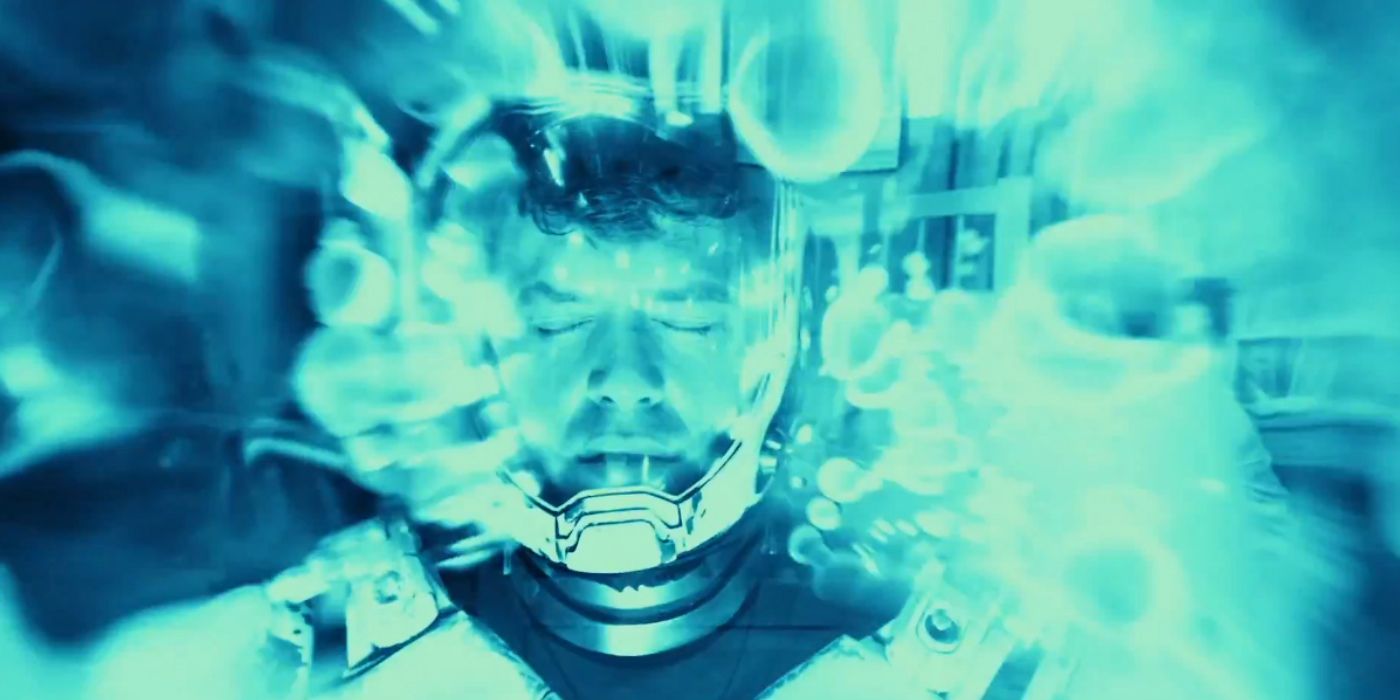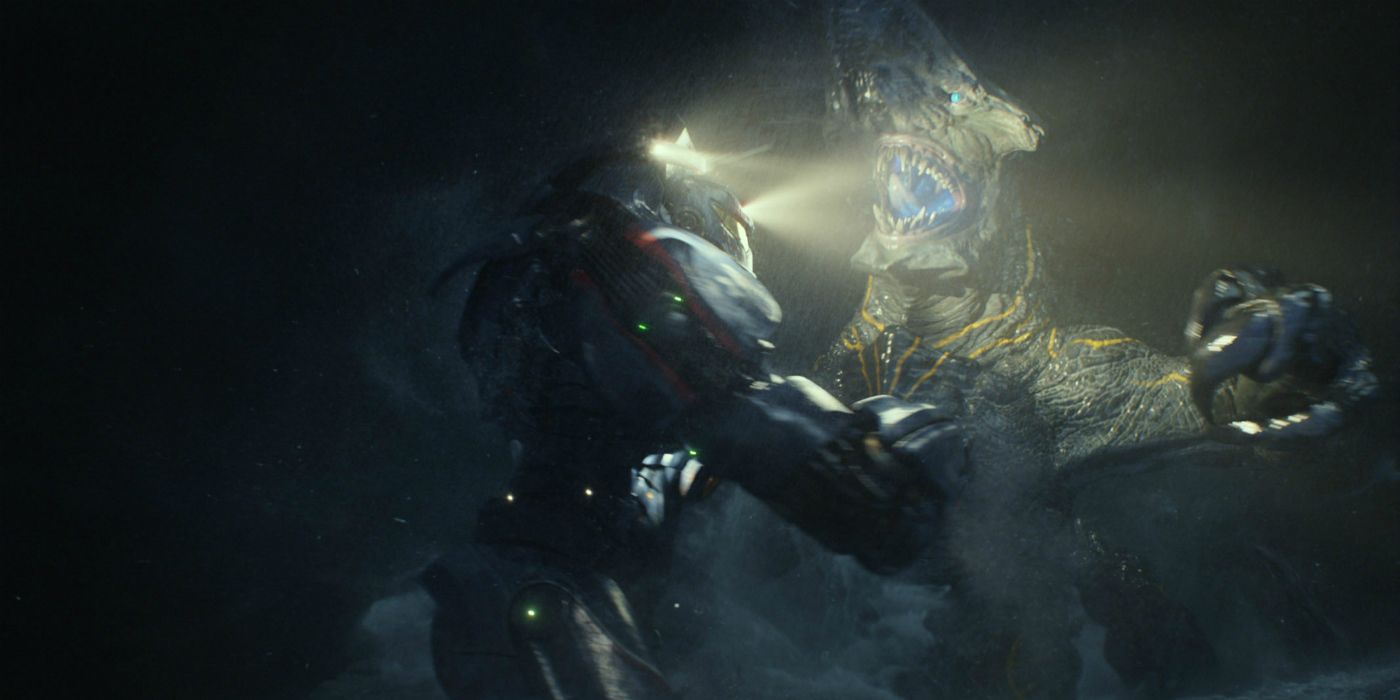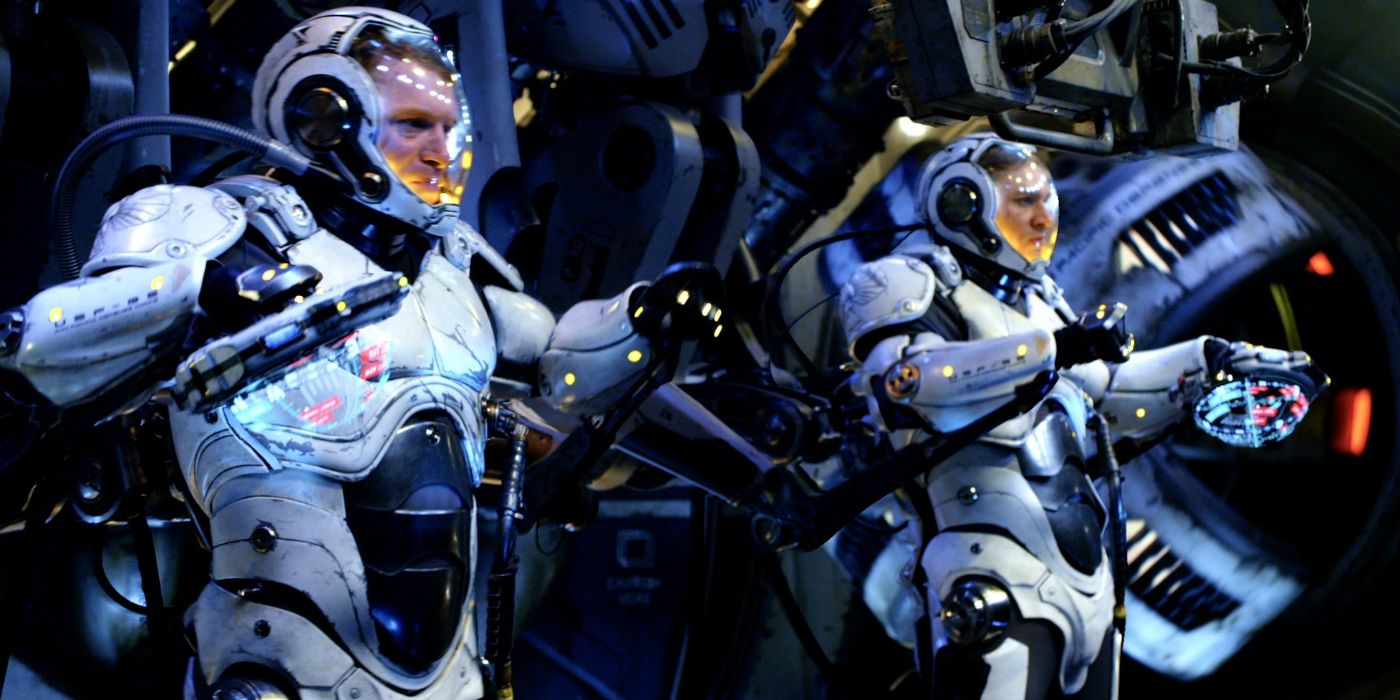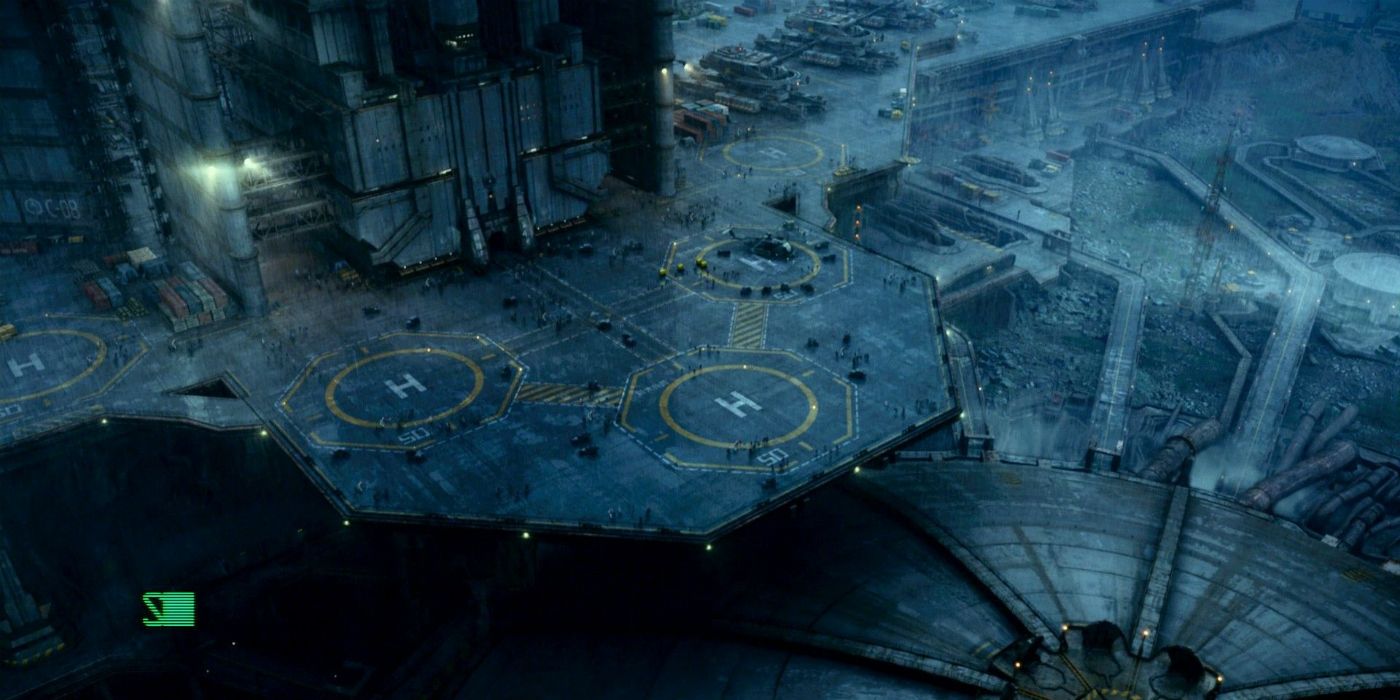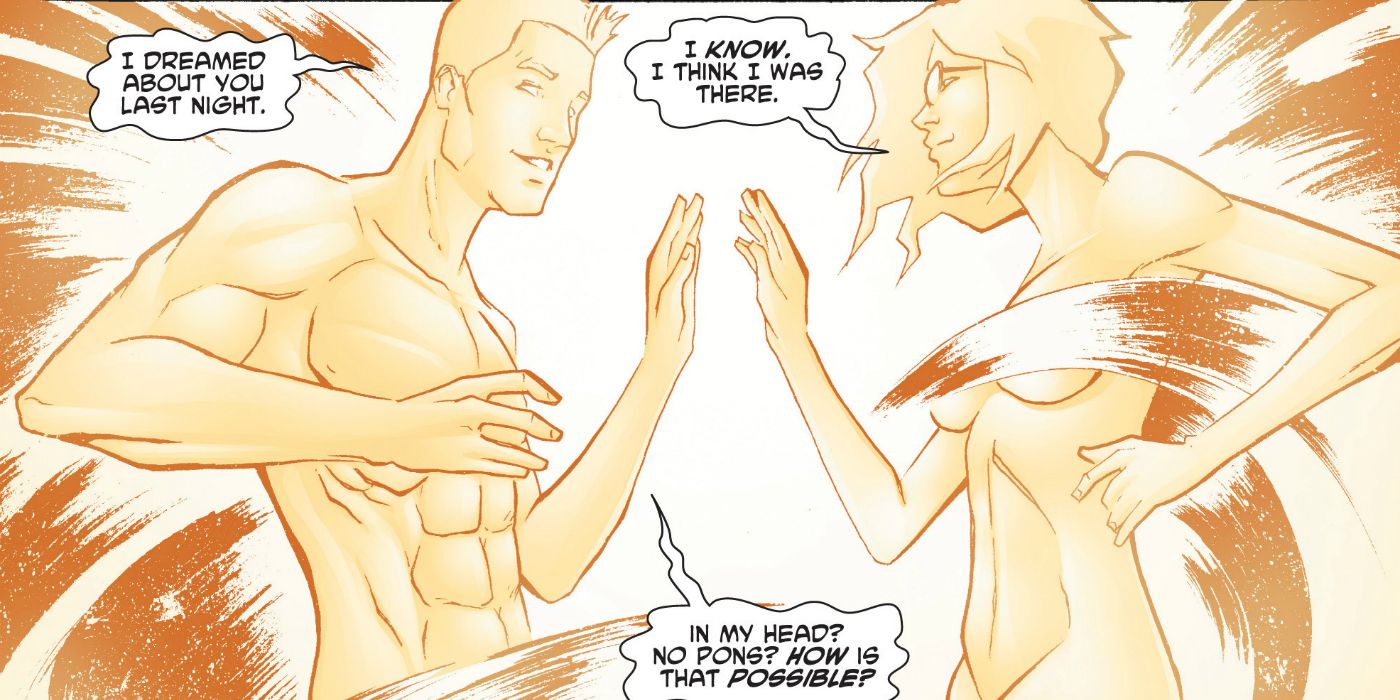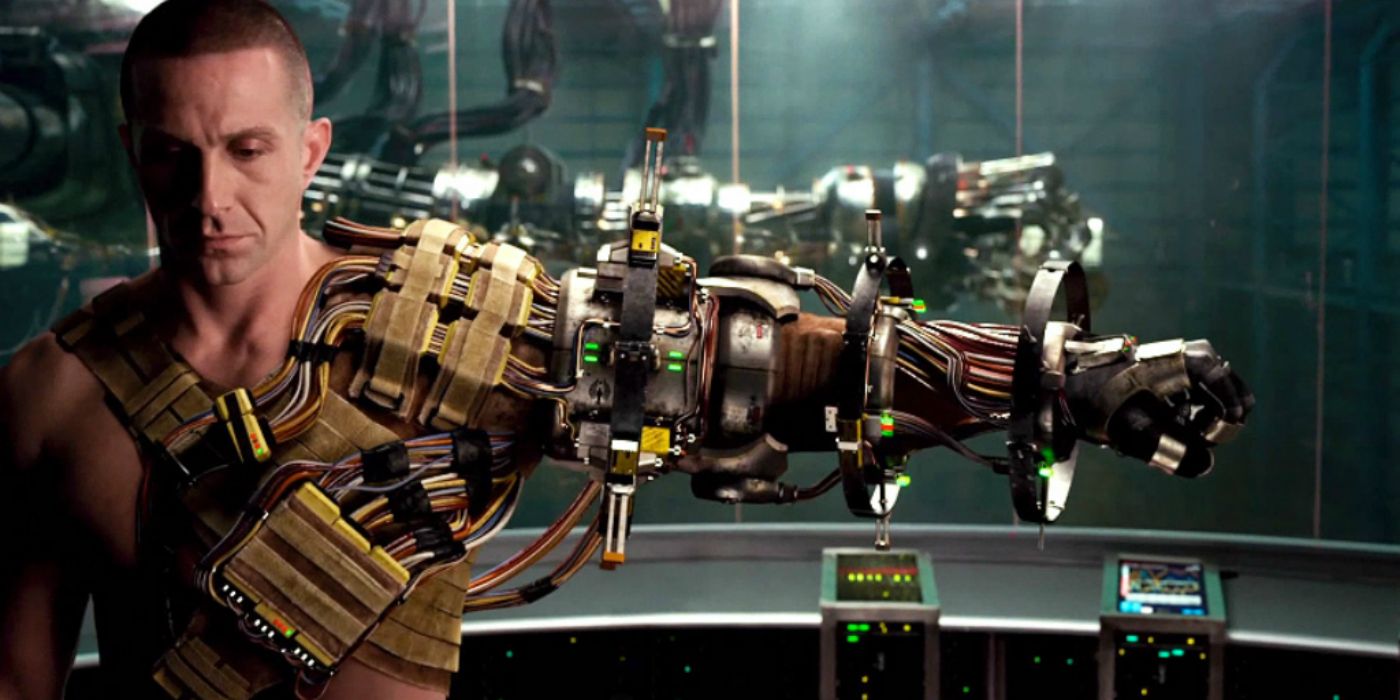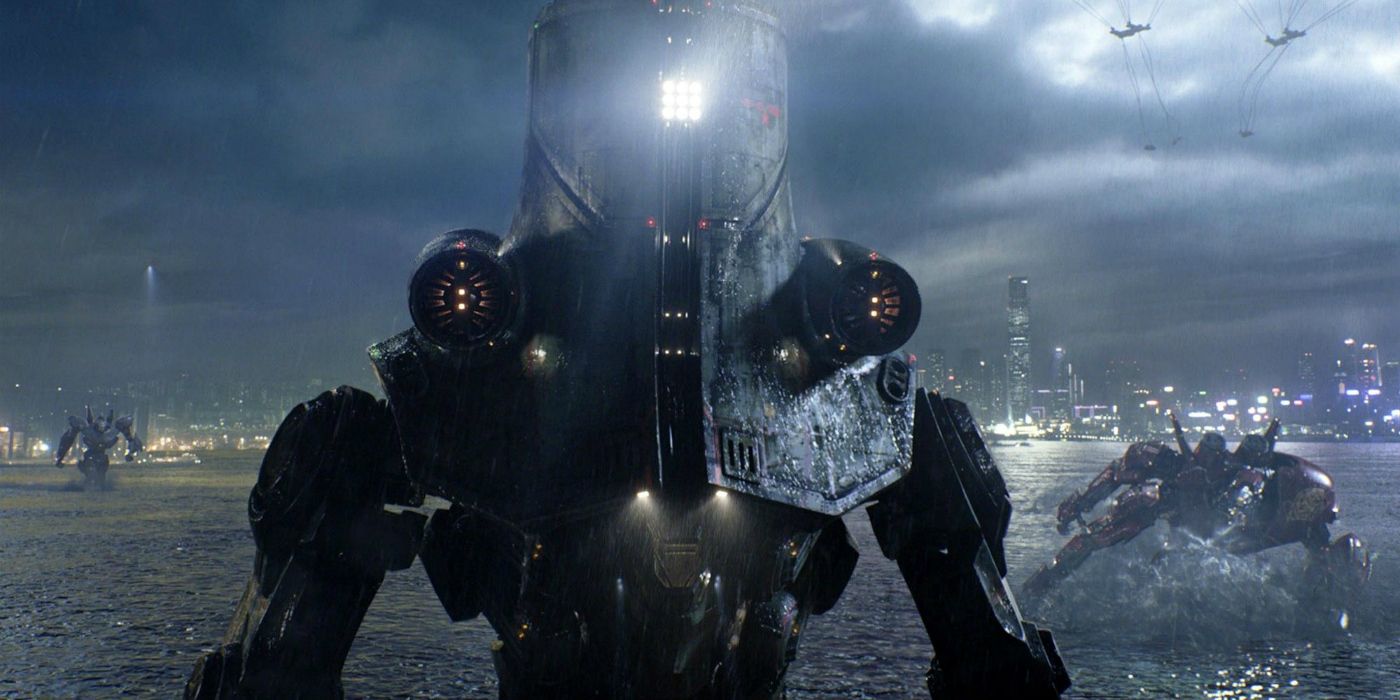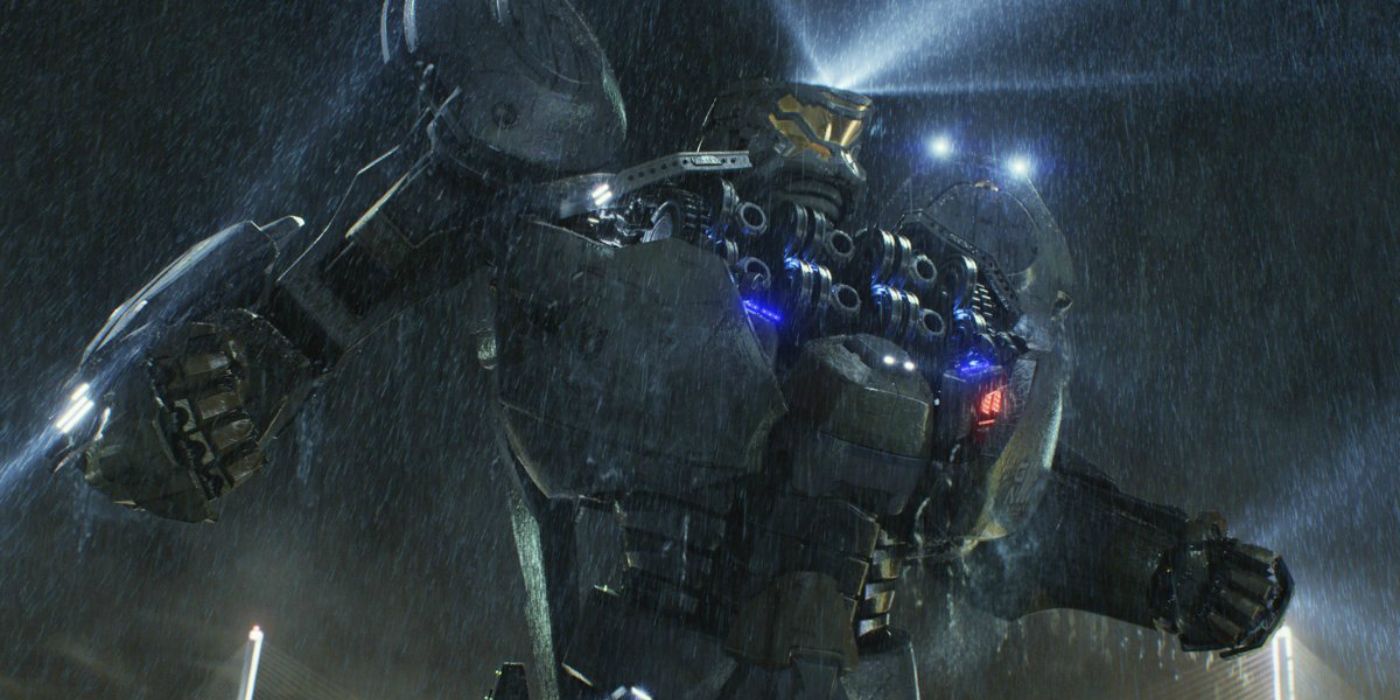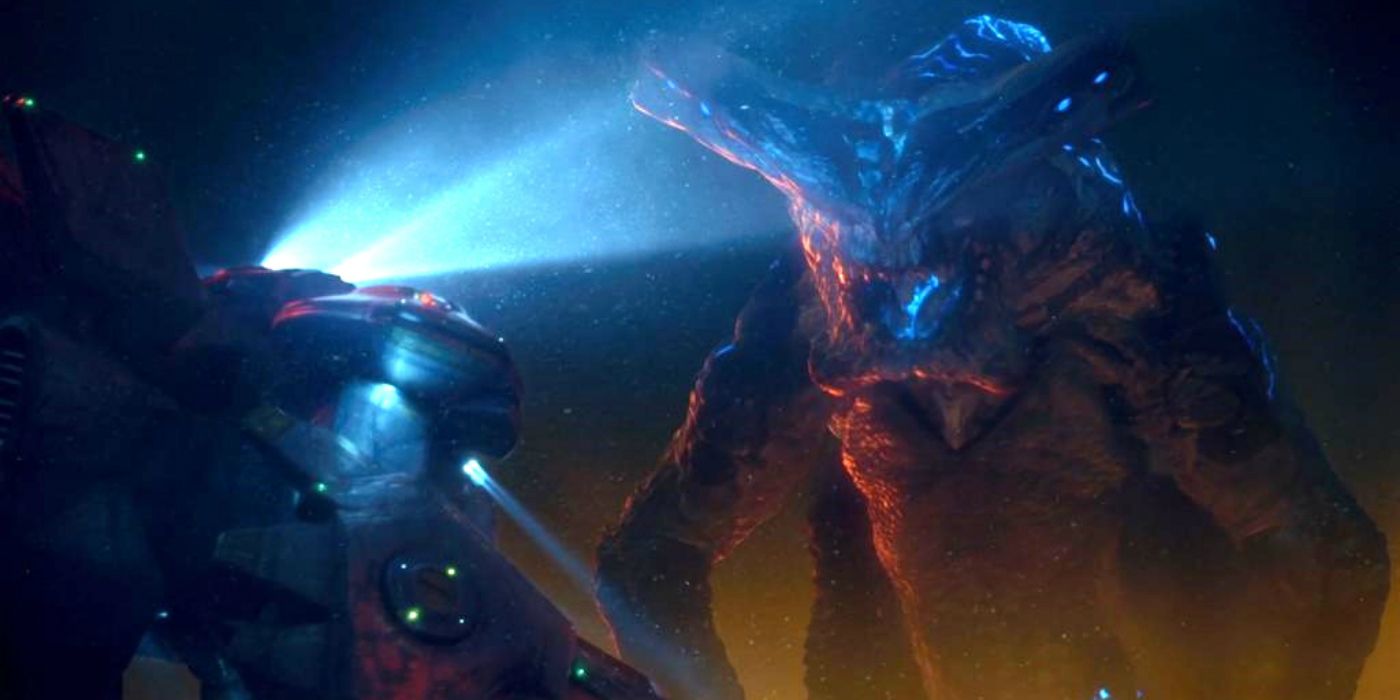The 2013 action movie "Pacific Rim" was about two things: giant robots called "Jaegers" and giant monsters called "Kaiju." The jaegers got a lot of attention just from the trailers, being souped-up versions of the huge mechs we had seen in old Japanese movies and TV shows, but with more detail and a bigger sense of scale than we'd ever seen before.
RELATED: Pacific Rim: 15 Things You Didn't Know About Kaiju
The jaegers are the heroes of the film, surrogates for the human pilots, and what we as viewers are there to see. The giant mechs are awesome to watch, but there's a lot going on under the hood you should know for "Pacific Rim: Uprising." Whether you've seen the movie a 1,000 times or only once, here are 15 things you probably didn't know about the jaegers.
15 THE WORD JAEGER
Let's start with the word itself, "jaeger." All the giant mechs in "Pacific Rim" are named jaegers, which is a German word that means "hunter." Well, sort of. Usually, the Germans spell it "Jäger," and it's more of a common surname in Germany, but it does technically mean "hunter." It's a fitting name for the mechs, because they are the ultimate hunters of the kaiju, built to seek out and destroy these wild beasts from another dimension. In-universe, the mechs are called that because they were conceived by a German engineer, Jasper Schoenfeld.
Behind the scenes, "Jaeger" is a commonly used name in Japanese entertainment. From Eren Jaeger (also spelled Eren Yeager) in "Attack on Titan" to Frank Jaeger (Gray Fox) in the "Metal Gear" series. Director Guillermo del Toro has also said he wanted "Pacific Rim" to feel more international, and not just based on Japanese or American culture. A German name helps with that.
14 TOY SOLDIERS
The movie didn't really get into where the jaegers came from, but the backstory was provided in the 2013 graphic novel. “Pacific Rim: Tales of Year Zero” (written by Travis Beacham, drawn by Sean Chen, Yvel Guichet, Pericles Junior, Chris Batista and Geoff Shaw) told the story of how the jaegers were conceived and developed, and it turned out the giant mechs didn't start out in a vacuum. They began with toy robots and monsters.
In the graphic novel, we discover Dr. Jasper Schoenfeld came up with the idea for jaegers on his way to a conference on the kaiju problem by seeing his son playing with toy robots fighting toy monsters. In that moment, he decided the best weapon against the kaiju would be mech soldiers. It's a great nod to the movie's inspiration from the fun we had as children seeing kaiju movies and playing with robots, acknowledging the role of giant robots in pop culture.
13 JAEGER VARIETY
There are five jaegers in "Pacific Rim" seen on screen and they all look very different from each other. You could pick most of them out just by the outlines alone, but the color and differently shaped arms, legs and heads help. From the three-armed Chinese jaeger Crimson Typhoon to the bulky Russian jaeger Cherno Alpha to the bold American jaeger Gipsy Danger, all the giant mechs were unique and exciting.
In the world of "Pacific Rim," the jaegers are different because the Pan Pacific Defense Corps wanted to have an assortment to match the wide variety of kaiju. Behind the scenes, del Toro wanted the jaegers to be unique and easy to identify, so the production team started the jaeger designs with silhouettes. When they decided on jaeger outlines that looked fun, they then built them out by fleshing out the details. In the fight scenes with darkness and rain and raging storms, you could still tell one jaeger from another.
12 GIPSY DANGER
The main jaeger in the movie (the "hero" if you will) was definitely the jaeger named Gipsy Danger. Gipsy Danger is an aging mech, acknowledged by everyone as an older model known as the Mark-3, featured in the opening scene where Raleigh Becket loses his brother and has to pilot Gipsy on his own back to the shore. The jaeger has a classic "almost retired and washed up" arc to the story, in which everyone thinks of it as worthless, but it turns out to save the day.
American moviegoers might have assumed the name was a misspelling of "Gypsy," but it's not. The word "Gipsy" allegedly came from the pre-World War II aircraft engine, de Havilland Gipsy. Unfortunately, the word "gipsy" is now considered an ethnic slur by the Romani people, so the movie stirred a bit of controversy for using the term. The screenwriter Beacham apologized on Twitter after he became aware of the problem, and fans have taken to referring to the mech as "Lady Danger" to avoid using it.
11 GIPSY SWAGGER
One thing that makes the jaegers in "Pacific Rim" so fun to watch is that they're not just big machines. Even though they have moving parts on the joints and you see rockets and particle accelerators working, they feel like living beings, almost human, if you will. That's not an accident. The movements of the jaegers are meant to show how each one has its own personality and feel, and Gipsy Danger's walk is a perfect example.
If you watch Gipsy Danger walk, you'll see a unique swing to its hips and stride. It's not just a mechanical robot walk. It definitely feels human, and there's a reason for that; Gipsy Danger walks like John Wayne. Del Toro has said he wanted the heroic jaeger to walk like a cowboy or a gunslinger, striding into a gunfight. There's a cockiness to it like it's spoiling for a fight. Just that one unique touch alone makes Lady Danger come to life.
10 CHERNO ALPHA
Another jaeger that gets a lot of screen time in "Pacific Rim" is the powerful Russian model codenamed Cherno Alpha. Cherno Alpha was a Mark-1 jaeger, one of the few nuclear-powered Mark-1 models still left standing, and the powerhouse in the Hong Kong assault. In the movie, the heavily armored jaeger was a real brute, smashing its fists together before and during combat. It's basically a walking tank with the added benefit of electrically charged punches.
Cherno has a less sleek and more blocky look to it than the other jaegers with a unique cylindrical head. It's inspired by the idea that the Russians would want a more armored jaeger than other countries. The head itself was apparently inspired by the cooling towers of Russian nuclear reactors or the Mr. Fusion power source for the Delorean in "Back to the Future II," depending on who you ask. The name "Cherno" isn't a reference to Chernobyl, but rather to the Slavic spirit creature known as Chernobog.
9 TWO MINDS
One of the major plot lines (some would even argue the main storyline) in "Pacific Rim" is the concept of "drifting." It's almost impossible for only one person to successfully pilot a jaeger, because the load on the brain is too great. Therefore, two pilots are needed to have their minds in sync. When a jaeger goes into combat, two pilots' minds are linked and work together to control the massive robots against the kaiju.
The screenwriter, Beacham, has said the idea of needing two pilots for the jaegers is what opened up the story for him. There's an obvious dramatic arc, because the jaegers are useless without two pilots who are drift-compatible, and drift compatibility is hard to achieve. Most of the other pilots are related like father and son or husband and wife or brothers, because they're the easiest to match up for compatibility. In "Pacific Rim," they have to bring together two strangers to become drift compatible. Del Toro compared the drifting of the two pilots to falling in love.
8 BLUNT FORCE
While we all know it's cool to watch mechs the size of skyscrapers fighting alien monsters, the question does come up occasionally, "What's the point? Why not just drop nuclear bombs on the kaiju and get it over with? Why spend the money and resources to build gigantic robots to punch them to death?" The backstory in "Pacific Rim" provided a good reason for why big fists are better than big bombs.
For one thing, with the number of kaiju attacks around the world, dropping nuclear bombs on them every time would eventually destroy all life on the planet. As for bombs, as mentioned in the movie, the kaiju have glowing blood that's known as "kaiju blue." Kaiju blue is extremely toxic, poisons anything it touches and turns into a lethal mist when the kaiju dies. Bombs and bladed weapons would splatter kaiju blue all over the place. By using blunt force trauma (in other words, big fists) or heat-based weapons like the plasma cannons, the kaiju can be killed while minimizing blood loss.
7 THE CONN-PODS
In "Pacific Rim," the jaegers were piloted inside the heads, called the Conn-Pods. Del Toro wanted to immerse his actors in the combat, so he brought them to life. The production built two full-sized versions of a jaeger cockpit to film the combat sequences, and it wasn't just two places for the actors to stand. The larger set weighed 20 tons and stood almost four stories high. They were redecorated for each jaeger, so all the interior shots of all five jaegers seemed very different.
In most movies and TV shows, movement is simulated by shaking the camera, but that's not how del Toro rolls. The control pod sets were built on hydraulic gimbals, so they could actually be shaken, dropped and rolled to simulate combat. The actors reportedly found the process gruelling, and would end the day exhausted and beaten from all the movement, except for Rinko Kikuchi, who played Mako Mori. She said she thought of gummi bears and flowers to keep her in a good mood.
6 SHATTERDOMES
At some point in the movie, you probably heard the word "shatterdome," but weren't sure what it meant, so let's get into that. In "Pacific Rim," the bases for the Pan Pacific Defense Corps were called Shatterdomes, and they serve as home bases for the jaegers. The Shatterdomes weren't just command centers, but also served as factories and maintenance hubs for the robots, as well as living quarters for jaeger pilots and personnel.
The name apparently comes from the fact that the bases are all covered in enormous domes that crack open to release the jaegers. There are eight Shatterdomes located around the world: Hong Kong, Lima, Anchorage, Los Angeles, Vladivostok, Tokyo, Sydney and Panama City. All of them are located near bodies of water where kaiju have breach points beneath the ocean, but all but the Hong Kong Shatterdome had been shut down by the time of the movie.
5 HEADSPACE
In the movie, the drift (the synchronizing of minds when piloting a jaeger) starts with a montage of memories from both people in the drift. When Mori and Becket begin the drift, they and the audience both see each others' memories of their lives before that moment. When Newton drifted with a kaiju, he saw flashes of the kaiju's life in the Anteverse, the alternate reality where the kaiju come from. Apparently, the kaiju also saw flashes of his life.
In the original script, the drift was much more complicated. Both parties would end up in a virtual world called the "headspace," where the two minds merged and existed as ghostly forms. In the graphic novel, the first two people to drift (a female scientist and the male test pilot) ended up living inside the headspace and having a passionate love affair. Del Toro decided not to use the headspace idea in the movie, because he thought it would be a waste of filming time.
4 REAL JAEGERS
In "Pacific Rim," the ability to connect human minds with machines is pretty straightforward. You put on a helmet, push some buttons and suddenly you're controlling a mech six stories tall. In the real world, of course, things aren't that simple. We don't have the technology to control a mechanical hand, much less the entire body of a gigantic robot, but the world of the jaeger isn't as far off as you might think. In fact, "Pacific Rim" based the movie's technology on real research.
DARPA, the research and development branch of the military, is currently working on a program called Reliable Neural-Interface Technology. Because of the huge number of soldiers who lose limbs in combat, the program is trying to find ways to let human brains control artificial limbs. If they succeed, the next step is obvious: controlling giant armored robots in the battlefield. Knowing you could pilot jaegers for real would definitely get people to enlist.
3 MARK-1
The jaegers in the movie ran the spectrum of technology. Striker Eureka was a Mark-5, the most advanced jaeger, and Russia's Cherno Alpha was a Mark-1, the least advanced. Let's talk a little more about the Mark-1, because by the time of "Pacific Rim," Cherno was a dinosaur, but it had a lot to do with the history of the program, which the movie didn't really get into. It's not a pleasant story.
The first jaegers were rushed into production in a total of 14 months to try to beat the on-going kaiju attacks, and there were a lot of corners cut. As they mentioned in the movie, Cherno Alpha and Gipsy Danger were both nuclear-powered, but the shielding wasn't that good in the Mark-1, putting the pilots at risk of radiation poisoning. Cherno Alpha is also heavier and slower than the more modern jaegers, but it still packs a wallop.
2 MARK-5
Now that we've covered the least advanced jaeger, let's talk about the most advanced: the Australian Mark-5 Striker Eureka. Striker Eureka was the first and only Mark-5 ever built, because the Jaeger Program was suspended shortly after it came off the line. Striker Alpha is the fastest and most agile of all the jaegers, and killed nine kaiju in locations all over the world, including Los Angeles and Mexico. Striker Eureka also had the only daytime fight in the movie when it fought the kaiju that broke through the Anti-Kaiju Wall, Mutavore.
At one point in the production, Striker Eureka was supposed to be the "hero" jaeger, but del Toro decided that it looked too cold and arrogant. That air of cockiness translated to the father-son team piloting the jaeger as well. The jaeger was originally gray, but del Toro changed its colors to earth tones in order to reflect the Australian outback.
1 SEA BATTLE
Almost all the kaiju fights in "Pacific Rim" take place in the ocean, and there are a few reasons for that. One is that the breach is at the bottom of the Pacific Ocean, so that's where the kaiju first appeared. You have to go where the action is. The Pan Pacific Defense Corps also want to cut down on casualties and damage, so they tried to keep the fight in the ocean and away from populated areas.
Behind the scenes, there were also reasons why the fights took place in the ocean. Del Toro has said he didn't want the audience thinking about people being killed during the fights, which was something people have complained about in the Metropolis battle in 2013's "Man of Steel." By having most of the fights take place in the open sea, we don't have to worry about anyone else, except for the occasional fishing boat. In the one battle in the city, the city was evacuated to keep people out of the line of fire.
What did you think about the jaegers? Let us know in the comments!

